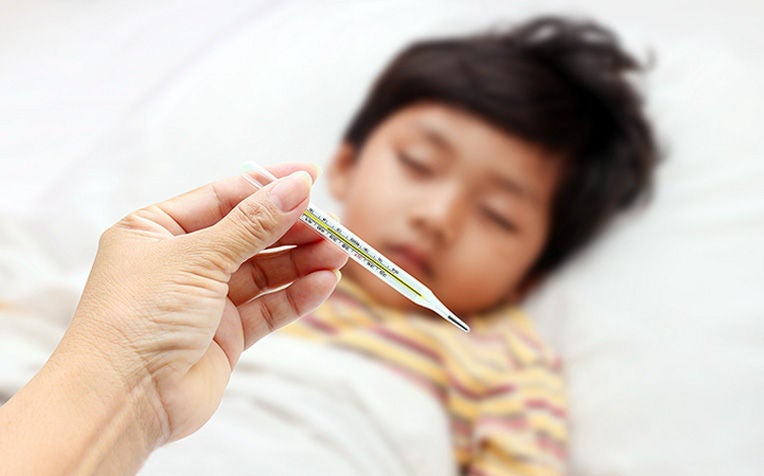
A febrile seizure (or fit) in a child usually occurs with fevers especially when the fever rises rapidly above 38°C, and can last for up to five minutes.
What is a febrile seizure (fit)?
A febrile seizure or fit affects three to five per cent of children, occurring between the ages of six months and six years of age. It usually occurs with fevers especially when the fever rises rapidly above 38°C, and can last for up to five minutes. It is also possible to have more than one seizure in a short period of time.
Common symptoms of a seizure (fit) in a child are:
Stiffening and/or jerking of arms and legs uncontrollably
Rolling up and staring of the eyes
Clenched teeth
If the seizure is short and not caused by a serious illness such as a brain infection (meningitis) or urinary tract infection, it does not cause permanent harm. A longer seizure lasting more than five to ten minutes or a seizure only on one side (also known as a complicated febrile seizure) require evaluation by a doctor.
What to do during a febrile seizure (fit)
Stay calm, do not panic.
Place your child on his/her side in a safe spot. Keep the head and neck straight to help breathing. Wipe away any secretions outside the mouth to prevent choking.
Do not attempt to put objects such as a spoon or your fingers into your child’s mouth. Biting the tongue is not dangerous to your child, but inserting objects may harm his/her mouth and teeth.
Do not feed the child fluid/medication (doing so may cause choking)
Fevers rise and fall during common viral infections. Medicine for fever can be given for the child’s comfort but will not reduce the risk of another seizure.
If in doubt, please consult your doctor for advice.
Tips to care for a child with seizures
Monitor your child’s general condition. Most children look unwell when they have high fever, but will return to normal activity once the fever is down for minor illnesses. If in doubt, consult a doctor.
If your child has a fever, medicine can be given.
If you child’s seizures are very frequent or prolonged, discuss with your doctor for advice.
When you should see a doctor
When your child has his/her first seizure.
If the seizure lasts for more than five minutes.
Your child becomes unresponsive for more than 20 to 30mins after a seizure. Most children will be sleepy and tired after a seizure but should be arousable (able to cry or struggle).
If your child is unable to move one side of his/her body (e.g. arms or legs) after a seizure.
Ref: K21
Check out other articles on seizure and epilepsy in children:
Epilepsy and Seizures: Causes, Types and How to Manage
Seizure and Epilepsy Action Plan
Epilepsy: Treatment and Diet Tips













 Get it on Google Play
Get it on Google Play